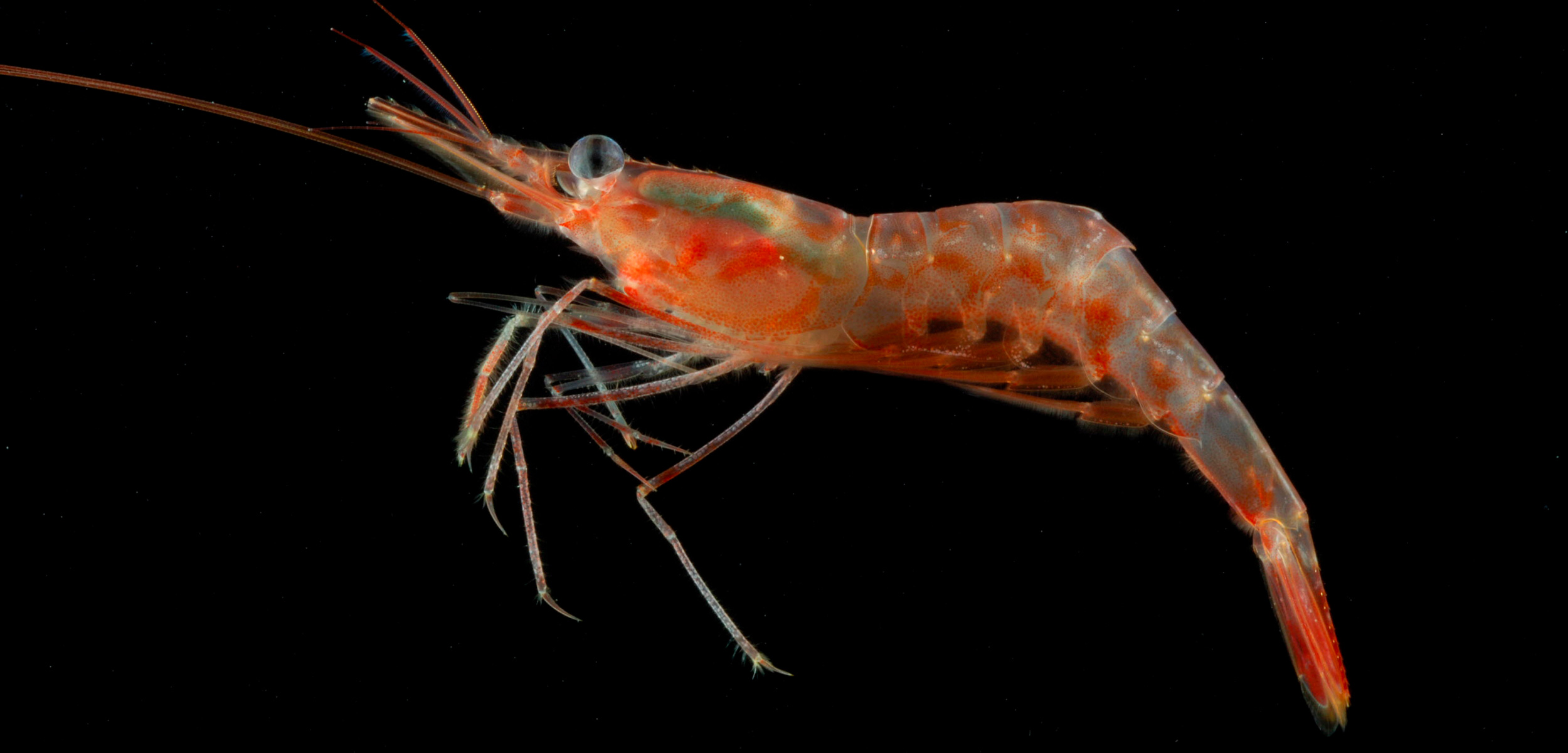For Juvenile Shrimp, Green Light Means Stop
LED light—especially green light—is an effective deterrent for juvenile shrimp.
Article body copy
Artificial light on a dark ocean can attract a wide range of marine life, from plankton to sharks to seabirds, sometimes with deadly consequences. A Norwegian study has found that northern shrimp, which live in a dim environment, seem to flee from lights—especially green ones—offering a potential pathway for reducing unwanted catch of juvenile shrimp.
Shrimp trawl nets are like big cones that commercial fishing boats drag along the ocean floor. The net is widest at the front and tapers toward the rear where the catch is retained. Fishers already have options to help avoid by-catch. Placing a grid near the rear of the trawl net, as well as using nets with various mesh sizes, allows some untargeted marine life to escape safely.
In the Norwegian study, researchers showed that LED lights could be another method to manage harvests. By fitting a single LED light to the inside top of the net, about halfway back from the mouth, the scientists could significantly reduce the by-catch of juvenile shrimp.
The scientists took their lit net for test trawls with the LED shining green, red, or white. All three reduced the number of juvenile shrimp caught, but to differing degrees. Compared with a net with no light, a green light caused a 54 percent reduction in catches of minimum legal-sized shrimp. The white light cut the catch by 42 percent, while the red light caused a 31 percent reduction. All sizes of shrimp responded to the light, but the mesh size only allowed the smaller ones to escape.
As for how the light actually led to a reduction in by-catch, one leading hypothesis is that the shrimp consider the light a danger and escape through the mesh at the bottom of the net. Alternatively, the shrimp may become passive as they approach the light, and smaller ones filter through the mesh.
“We cannot observe the natural behavior,” says study lead author Ólafur Ingólfsson at the Institute of Marine Research in Bergen, Norway. “You have to infer what’s going on.”
Given that shrimp are adapted to a dark environment, the trick generally is to not bombard them with light that is too intense, or for prolonged periods. Blinding the shrimp would only make them incapable of feeding or avoiding predators. But a bit of light—especially green—can make a good deterrent.
The study shows that artificial light can benefit not just the juvenile shrimp, but also the profit margins of fishers operating under limited catch quotas.
In Norway, shrimp fall into three size categories: undersized, industrial, and boiled. The largest shrimp fetch a price more than five times higher than industrial-sized shrimp, and 24 times higher, or more, than undersized shrimp.
Shrimp trawl fishers in Norway are required to land all the shrimp they catch regardless of size, but they can be tempted to “high grade” their catch—that is, to toss the smaller shrimp back and go after the larger, more profitable ones. Having a more selective catch could give fishers a higher return while avoiding this practice.
Artificial light is no panacea. But along with mesh size, and the configuration of trawl nets and grids, it could be another option to help reduce by-catch.
As Ingólfsson’s colleague Terje Jørgensen, also at the Institute of Marine Research, says: “If we want to maintain catches of the biggest shrimp while reducing catches of juvenile shrimp, more than one solution is a good idea.”
Scott Groth, a researcher at the Oregon Department of Fish and Wildlife who helps manage the state’s pink shrimp trawl fishery but was not involved in the research, says the study is compelling, but that more experimentation is needed to justify management changes.
Any success in reducing by-catch of juvenile shrimp must be weighed against the risk of lights attracting other fish, Groth says. In Oregon’s shrimp fishery, he says, the main concern is by-catch of eulachon, a threatened species of smelt with long-standing importance to local Indigenous communities.
“I would have concern if someone was to pop a bunch of lights on the top of our trawls,” Groth says. “They can attract fish, and that can be good or bad depending on whether you want them or not. [Lights] can have a strong effect.”

